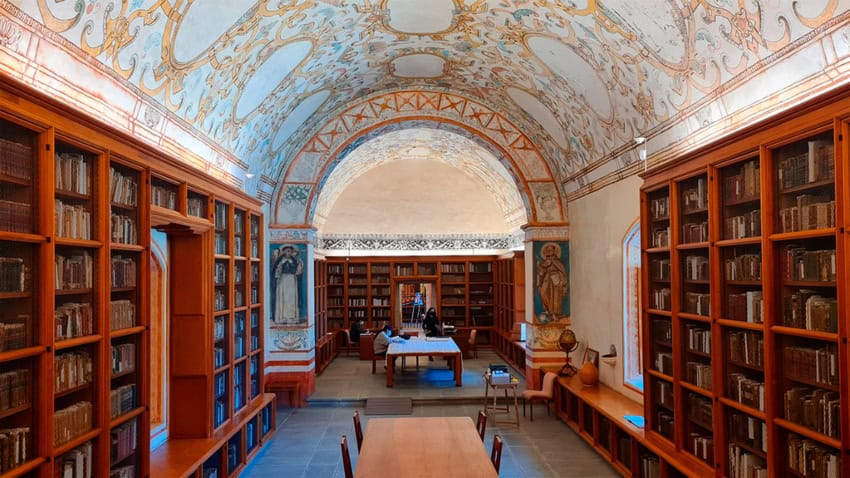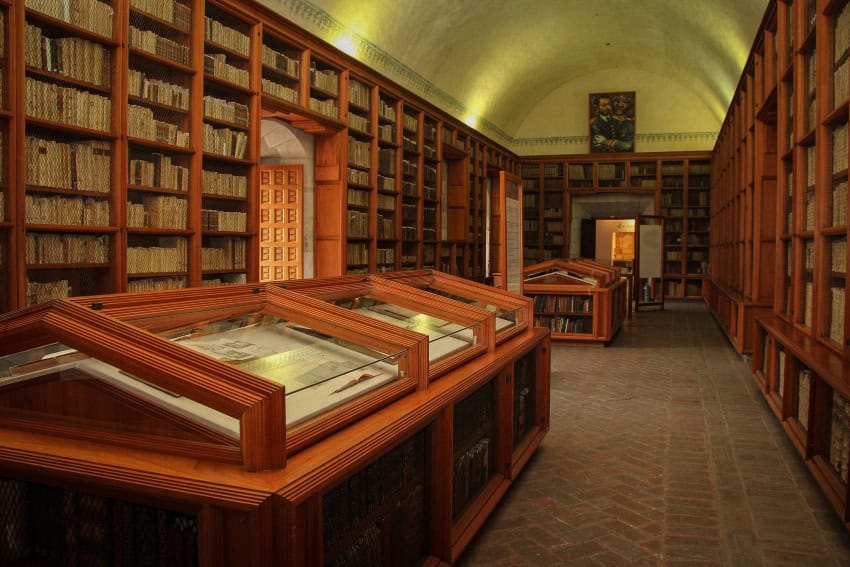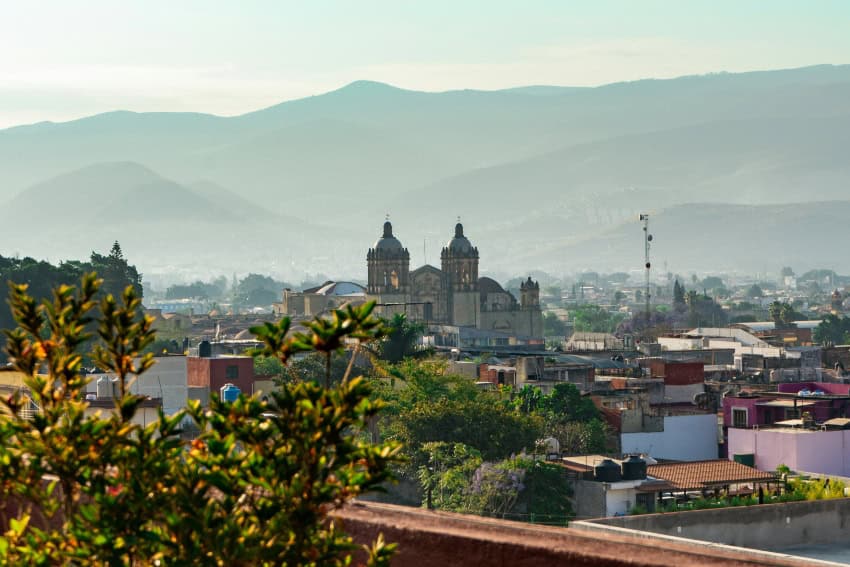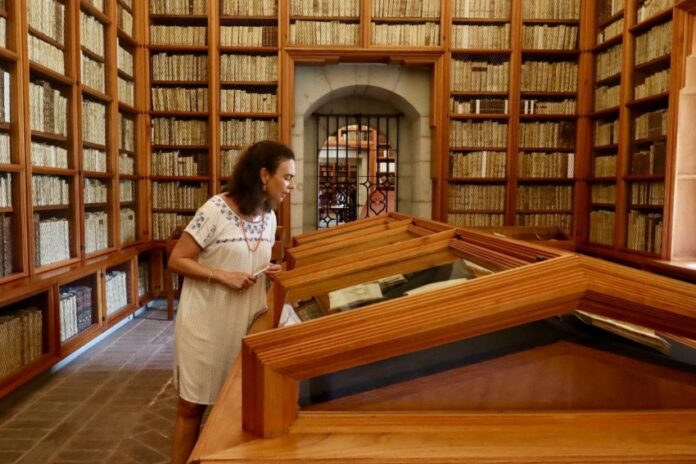Nestled within the magnificent walls of the Centro Cultural Santo Domingo in Oaxaca City, the Friar Francisco de Burgoa Library stands as one of Mexico’s most extraordinary repositories of historical knowledge and cultural heritage.
This remarkable library, housed in what was once the Dominican monastery of Santo Domingo de Guzmán, represents far more than a simple collection of books — it is a living testament to the intellectual and spiritual legacy of colonial Mexico.

The Friar Francisco de Burgoa Library’s story begins in the 16th century, when Dominican friars established their monastery — an architectural masterpiece that took nearly one century to complete — in what would become one of New Spain’s most important religious and educational centers.
The baroque splendor of the complex, with its intricate stone carvings, soaring vaulted ceilings and elaborate gold-leafed altarpieces, provides a breathtaking backdrop for one of Latin America’s most significant historical collections.
The Burgoa collection: Treasures beyond measure
The library’s name honors Francisco de Burgoa, a 17th-century Dominican friar whose works provide invaluable insights into the early colonial period in Oaxaca. Burgoa’s own writings are his own chronicles of the Dominican activities with the Indigenous cultures of Mexico. When the Dominican missionaries who curated the Burgoa selected which books to bring to the New World, they were making choices that would shape intellectual life in colonial Mexico for centuries to come.
The library is one of Latin America’s most significant repositories of early printed books and manuscripts. The nearly 40,000 volumes housed here include priceless works on theology, philosophy, natural history, linguistics and ethnography that span five centuries of human knowledge and creativity and provide unparalleled insights into colonial intellectual life.
At its core lies the historic collection of the Dominican convent, featuring incunabula, manuscripts and rare books. The incunabula collection, among the library’s most precious holdings, dates back to the historical moment when the age of manuscripts was giving way to the age of the printing press.
Among the crown jewels of the collection is a copy of the Nuremberg Chronicle (Liber Chronicarum) by Hartmann Schedel, printed by Anton Koberger in 1493. This massive work, one of the most ambitious publishing projects of the 15th century, contains over 1,800 woodcut illustrations and represents a comprehensive attempt to chronicle world history from creation to the contemporary period. The Burgoa copy is particularly significant because it arrived in Mexico during the early colonial period, making it one of the first illustrated world histories available in the Americas.

The collection also houses remarkable examples of early printing in the Americas, including works produced by the pioneering presses of Mexico City and Puebla. These volumes demonstrate the rapid adoption and adaptation of European printing technology in the New World.
The Friar Francisco de Burgoa Library today
The physical setting of the Burgoa Library is as remarkable as its collections. Housed within the former monastic cells and common areas of the Dominican convent, the library spaces retain much of their original architectural character while incorporating modern conservation and research facilities.
The main reading room occupies what was once the convent’s refectory, where Dominican friars gathered for communal meals and spiritual reflection.
A rare open-door policy
While the Burgoa Library’s historical collections form its foundation, the institution has evolved into a dynamic center for contemporary scholarship and cultural research. The library regularly hosts visiting scholars from universities and research institutions throughout Mexico and internationally.
But most importantly, unlike many prestigious libraries around the world that house similar collections — institutions like the Beinecke Rare Book Library at Yale, the Bodleian Library at Oxford or the Vatican Apostolic Library — the Burgoa Library operates under a fundamentally different philosophy regarding access to its treasures. While those renowned institutions often require extensive credentials, academic affiliations or special permissions to access their rare materials — the assumption underlying these restrictions being that rare books and manuscripts are too precious and fragile to be handled by anyone but qualified scholars — the Friar Francisco de Burgoa Library maintains an open-door policy that reflects a deeply democratic understanding of knowledge and cultural heritage.
The Friar Francisco de Burgoa Library challenges this paradigm by recognizing that cultural heritage belongs to the community from which it emerged. The collection is viewed not as the exclusive domain of the academic but as a shared inheritance that should be available to all members of society.

The library’s success in balancing preservation with access, historical scholarship with contemporary relevance and local identity with international collaboration offers valuable lessons for cultural institutions worldwide. As it continues to evolve and adapt to changing circumstances, the Burgoa Library remains an essential resource for anyone seeking to understand this rich cultural heritage.
Social anthropologist and photojournalist Ena Aguilar Peláez writes on health, culture, rights, and the environment, with a strong interest in intercultural interactions and historical and cultural settings.
